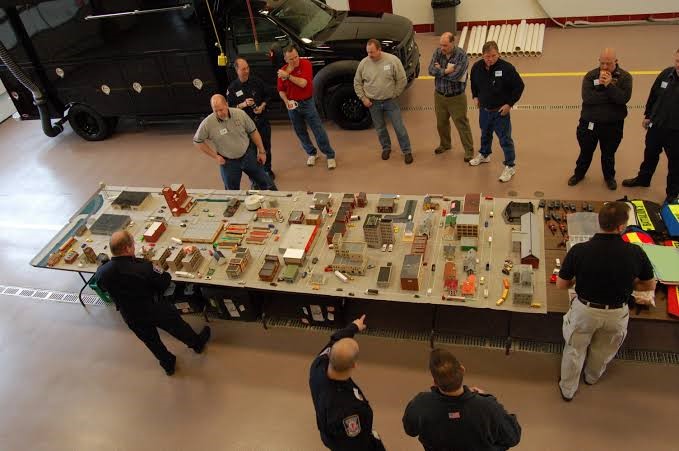
TABLE-TOP EXERCISE (TTX)

09.12.2023
TABLE-TOP EXERCISE (TTX) , Daily Current Affairs , RACE IAS : Best IAS Coaching in Lucknow
|
For Prelims:About Tabletop Exercise,Objective,About ASEAN For Mains paper:What is India’s contribution towards United Nations Peacekeeping forces?,What is the U.N. Peacekeeping mission? |
Why in the news?
Recently,The Indian Army conducted a Table-Top Exercise (TTX) for the Women Officers of Association of South-East Asian Nations (ASEAN) at Manekshaw Centre in New Delhi.
About Tabletop Exercise
- A Tabletop Exercise (TTX) is a type of simulation or interactive discussion-based exercise conducted to assess and enhance preparedness for potential emergency or crisis situations.
- It is a scenario-driven exercise that involves key stakeholders, decision-makers, and subject matter experts gathering around a table to discuss, analyze, and respond to a hypothetical scenario or set of scenarios.
- The Exercise is part of ongoing efforts of Centre for United Nations Peacekeeping (CUNPK) to strengthen international cooperation and capacity-building in peacekeeping missions, with specific focus on empowering women in the field.
- CUNPK is a premier institution of the Indian Army to impart training in peacekeeping operations.
- CUNPK had earlier conducted the ASEAN Women Military Officers Course from 18th to 29th September 2023.
- This TTX is a follow up exercise of ongoing joint military training between India and ASEAN member states.
- The Exercise underscores India’s shared commitment to world peace, stability, and gender equality.
- This Exercise served as a platform for participants to simulate and strategise responses to complex peacekeeping scenarios, reflecting real-world challenges.
- It also included exposure to a complex operational peacekeeping environment and methods to ensure women peace and security.
Objective
to promote gender inclusivity and enhancing the capabilities of women military personnel in peacekeeping operations.
What is India’s contribution towards United Nations Peacekeeping forces?
- India has contributed approximately 2,75,000 troops to peacekeeping missions so far and 159 Indian Army soldiers have lost their lives across the globe.
- Apart from the current deployment, India has pledged one Infantry Battalion Group and a Navy Corvette with Helicopter, as hard power and an Engineer Company and Signal Company as Force enablers, to be deployed at the behest of the U.N., the Army said in a statement.
- Currently, 5,581 Indians are part of various U.N. Peacekeeping missions.
- Deployment of women: In 2007, India became the first country to deploy an all-women contingent to a U.N. Peacekeeping mission.
- India has deployed Female Engagement Teams in the United Nations Organization Stabilization Mission in the Democratic Republic of the Congo and the United Nations Interim Security Force for Abyei, which is the second largest women contingent after Liberia.
- India has also deployed Women Military Police in the United Nations Disengagement Observer Force and women staff officers and military observers in various missions.
- Training: In 2016, India and the U.S. initiated an annual training program for joint training of U.N. peacekeepers from African countries.
- The program successfully conducted three iterations before being interrupted by the COVID-19 pandemic. However, in 2021, a revamped version of the program was launched, and two iterations have been completed till now.
- The Indian Army has set up a Center for United Nations Peacekeeping
- (CUNPK) in New Delhi, which provides peacekeeping training to over 12,000 troops annually. Additionally, the center serves as a platform for hosting foreign delegations to exchange best practices.
- It also frequently sends mobile training teams to friendly foreign nations to assist in their capacity building efforts related to United Nations Peacekeeping (UNPK).
- Despite its presence in several countries as part of the Peacekeeping missions, India has routinely expressed its displeasure at a similar mission headquartered in Srinagar and Islamabad.
- The United Nations Military Observer Group in India and Pakistan (UNMOGIP) was established on January 24, 1949 to supervise the ceasefire between India and Pakistan.
- UNMOGIP has remained in the region to observe hostilities between the neighboring countries and report ceasefire violations along the Line of Control (LoC).
- India has reiterated that the mission has “outlived its relevance” after the Simla Agreement was signed by India and Pakistan in July 1972 and the establishment of the LoC.
What is the U.N. Peacekeeping mission?
- The U.N. Peacekeeping mission is a joint effort between the Department of Peace Operations and the Department of Operational Support and aims to assist host countries to transition from situations of conflict to peace.
- U.N. Peacekeepers provide security as well as political and peacebuilding support to conflict-ridden countries.
- UN Peacekeeping is guided by three basic principles:
●Consent of the parties;
●Impartiality;
●Non-use of force except in self-defence and defence of the mandate.
About ASEAN
- ASEAN stands for the Association of Southeast Asian Nations. It is a regional intergovernmental organization that promotes cooperation and integration among its member countries in Southeast Asia.
- ASEAN was established on August 8, 1967, with the signing of the ASEAN Declaration (also known as the Bangkok Declaration) by its founding members, which included Indonesia, Malaysia, the Philippines, Singapore, and Thailand. Since then, the membership has expanded to include Brunei, Cambodia, Laos, Myanmar (formerly Burma), and Vietnam.